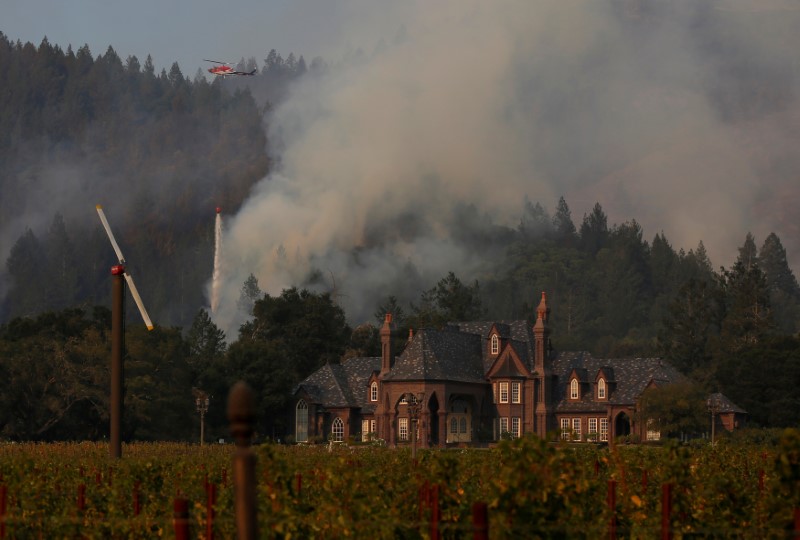
By Keith Coffman
(Reuters) – Insured property losses from wildfires that raged through Northern California wine country this month, killing at least 42 people and destroying thousands of businesses and homes, could total $2 billion to $3 billion, a risk-modeling firm said on Thursday.
The analysis by Boston-based AOR Worldwide, encompassing anticipated claims for destroyed residences, automobiles, commercial properties and other economic losses, is at least double a preliminary tally estimated last week by the California Department of Insurance.
The AOR report said losses would be dominated by devastation in residential areas, especially in Sonoma County, where entire neighborhood blocks were reduced to ashes.
Since erupting on Oct. 8, the wind-driven wildfires have consumed some 245,000 acres across several California counties north of the San Francisco Bay area, leaving at least 8,700 structures destroyed.
Most of the property loss was concentrated in California’s celebrated wine country, including Sonoma County, the California Department of Forestry and Fire Protection, or Cal Fire, said this week.
Authorities have confirmed 42 fatalities in Sonoma and three other Northern California counties, among them a volunteer firefighter who was killed when his water-tender truck crashed. The death toll marked the greatest loss of life from a single wildfire event in the state’s history.
The $1 billion gap between the low- and high-end estimates was due to uncertainty surrounding how many claims will be filed for living expenses from residents forced to flee their homes, as well as for smoke damage and business disruptions caused by power outages, AOR Worldwide said.
Another unknown factor is the scope of damage that may have occurred during fire suppression efforts, it added.
A preliminary estimate from the California Department of Insurance a week ago put insured losses at just over $1 billion, although it said that figure would likely rise.
A spokeswoman with the department said on Thursday that the agency has not updated its figures.
The October wildfire outbreak was fueled by unseasonably high temperatures, tinder-dry conditions, and gusty winds. As of Thursday, most of the fires were near, or at, full containment, Cal Fire said.
Cooler weather forecast for the region in coming days should ease the wildfire risk, AOR said in its report, although Cal Fire urged the public exercise caution to avoid igniting further blazes as warm, dry weather lingers across parts of the state.
(Reporting by Keith Coffman in Denver; Editing by Steve Gorman and Michael Perry)














